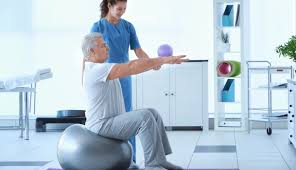What is Parkinson’s disease?
Parkinson’s disease (commonly known as Parkinson’s) is a movement disorder that can affect your ability to perform normal daily activities. It is a chronic and progressive disease. There are some common symptoms that you will have, including tremors, stiffness, mobility and balance problems, and slowness of movement.
Parkinson’s is most common in people over the age of 50, but it can also affect younger people. It’s cause is unknown and unfortunately there is no cure. Treatment options vary from patient to patient.
It is possible to have a great quality of life if you are diagnosed with Parkinson’s, but in order to achieve this you will need to understand the disease and its progression.
What are the early signs and symptoms of Parkinson’s?
There are many signs that may show you have symptoms of Parkinson’s. The common signs are:
- Tremor – you may notice a slight shaking or tremor in your hand. If you are resting and you notice that you still have the tremor you will need to tell your doctor this.
- Your handwriting – you may have noticed that your handwriting has deteriorated and has become much smaller over a period of time.
- Loss of smell – you may have noticed that you can no longer smell certain things very well anymore, like food and flowers.
- Walking and moving around – You may notice that walking or just moving around is becoming more difficult for you. You may feel stiff in your arms and leg, and start to shuffle when walking rather than taking actual steps.
- Your voice – your voice may become more hoarse sounding or not as loud as it used to be and people are having problems understanding you.
- Facial expressions – people may have mentioned to you that your face has a depressed and serious look even when you are feeling happy. This is called facial masking.
- Posture – you will notice that your posture has changed lately and you are not able to stand up as tall and straight as you used to be able to. You may feel like you are slightly off-balance.
What causes Parkinson’s?
With this disease certain nerve cells in your brain gradually break down. Many of the symptoms you may be having are due to a loss of connections in your brain due to a reduction in a chemical called dopamine. Dopamine’s job is sending messages to the part of your brain that controls movement and coordination. As your dopamine levels start falling, you may notice symptoms progressing.
There is no real known cause for Parkinson’s, but there are a few factors than can be taken into account:
- Genes – It is very rare for Parkinson’s to run in families. However for a very small minority there is a genetic link.
- Environment – When we expose ourselves to different toxins and pesticides, this can increase the chances of getting Parkinson’s but it is very rare indeed and not clearly understood.
- Age – People usually start developing symptoms from their 50’s and onwards.
- Sex – Men are more likely to develop Parkinson’s than women.
How is Parkinson’s diagnosed?
There is not one test that will show that you have Parkinson’s disease. Your diagnosis will be based upon a number of different factors, including taking your medical history and undergoing a physical examination.
If your GP suspects that Parkinson’s could be the reason for your symptoms, they will refer you to a neurologist who specialises in all areas of the brain and nervous system.
During your appointment, the neurologist will ask you to perform a number of physical exercises so they can assess what problems you are encountering with your mobility.
Imaging is often used. A single photon emission computed tomography (SPECT) scan can help diagnose Parkinson’s by ruling out other conditions. If your neurologist suspects you have the condition, they may give you a medication called levodopa. If your symptoms improve, it is more likely you have Parkinson’s disease.
What is the best exercise for Parkinson’s?
For people who have been diagnosed with Parkinson’s disease, exercise plays a vital role in maintaining mobility, balance, and normal daily activities.

Evidence shows that people with Parkinson’s who start to exercise following their diagnosis show a slower decline in symptoms compared to those people who take up exercise long after.
The exercises that can help your symptoms of Parkinson’s are:
- Flexibility stretching
- Aerobic activity or aqua aerobic
- Resistance and strength training
Everyone is different and will the range of different exercises undertaken will be dependant on the symptoms and severity of the disease. For people living a sedentary lifestyle, just getting out of bed and out of your chair will be very beneficial.
For the more active, the more exercise you do, the more strength, flexibility and balance you will have. This will certainly ease your symptoms and improve your mobility.
Can Parkinson’s be reversed with exercise?
Parkinson’s cannot be reversed with exercise, but many studies show that regular exercise will give you more strength, flexibility, and balance for a healthier lifestyle.
How physiotherapy can help your Parkinson’s
We will do whatever we can to get you on the fastest route to recovery. Some of the treatment methods we use include:
- Mobility and balance exercises
- Specific exercises for posture
- Strengthening exercises
- Myofascial trigger point release
- Pilates
- Stretching and range of movement exercises
- Functional exercises
- Kinesio-taping
